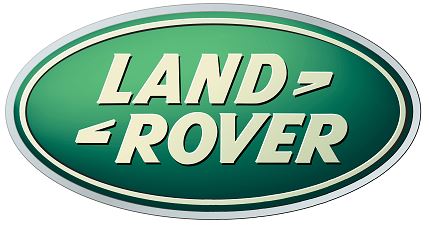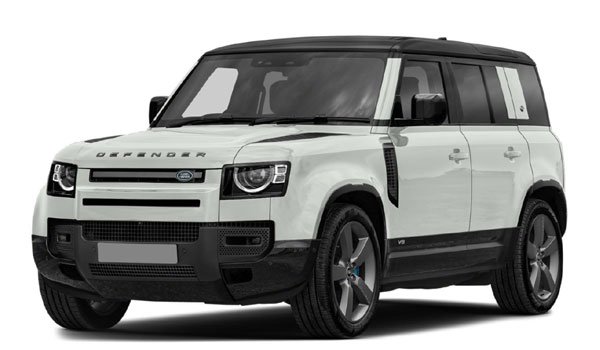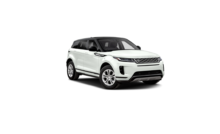2023 Land Rover Defender Vehicle Recovery Owners Manual








RECOVERY METHOD
Make sure that vehicle recovery and/or transportation is carried out by suitably qualified personnel, and the vehicle is secured correctly. Recovery and/or transportation carried out by unqualified personnel can result in serious injury or death.
The recovery agent must activate the transmission park release before recovery commences. Transmission park release instructions are covered in a separate publication for recovery personnel use. Failure to activate the transmission park release can result in serious transmission damage.
The vehicle should not be towed on all four wheels and should not be recovered with the front or rear wheels suspended. Doing so can result in serious transmission damage.
The method for recovery and/or transportation of the vehicle is on a transporter or trailer designed for that purpose.
FRONT TOWING EYE
The front towing eye is designed for both on-road and off-road recovery (up to 6.5 tonnes). If the towing eye is used for any other purpose, it may result in vehicle damage and can cause serious injury or death.
Use extreme caution when moving or towing the vehicle. Death or serious injury may occur.
Remove the front towing eye cover before driving off-road, to prevent damage or loss. The cover must be replaced before driving on the road.
The front towing eye is located behind a removable cover in the front bumper.
To remove the cover:
- Rotate each of the fasteners counter-clockwise with a suitable tool.
- Pull the cover forward from the rear lower edge to release the lower tabs and the lugs on the top edge of the cover.
- The towing eye is located in the center of the exposed area.
To refit the cover:
- Offer up the cover. Make sure the lugs at the top edge and the tabs on the bottom edge engage with the holes in the bumper.
- Rotate each of the fasteners clockwise to secure the cover in position.
REAR TOWING EYE
The screw-in-type rear recovery eyes are designed for on-road recovery only. If the screw-in-type towing eyes are used for any other purpose, it may result in vehicle damage and can cause serious injury or death.
Use extreme caution when moving or towing the vehicle. Death or serious injury may occur.
The rear towing eyes may be used to tow another vehicle if required.
The vehicle’s rear towing eye socket is located behind the rear bumper cover 1. To remove the cover, lever the left-hand side of the cover outward from the bumper.
The vehicle’s rear towing eye 2 is located underneath the loadspace floor. Screw the towing eye into the aperture located behind the rear bumper cover.
Tighten or loosen the towing eye as required using the vehicle’s wheel brace. Pass the wheel brace through the towing eye and rotate to tighten/loosen as appropriate.
To refit the cover, push the right-hand side of the cover home first. Then push the left-hand side of the cover to be flush with the bumper.
The rear exposed towing eyes are designed for both on-road and off-road recovery (up to 6.5 tonnes). If the exposed towing eyes are used for any other purpose, it may result in vehicle damage and can cause serious injury or death.
Avoid leaving towing equipment attached to the rear towing eyes when not in use. Some towing equipment may damage the vehicle’s paintwork.
Vehicles with exposed towing eyes have a pair of towing eyes protruding through the rear bumper cover 1.
TRANSMISSION PARK RELEASE
Make sure the following warnings and cautions have been read and fully understood before carrying out the transmission park release. Failure to follow the guidance given could lead to serious injury, death, or vehicle damage.
Before attempting the transmission park release procedure, make sure that the vehicle is secured with wheel chocks and apply the Electric Parking Brake (EPB). Failure to secure the vehicle can result in unexpected movement of the vehicle, which could result in personal injury.
It is recommended that the following procedure is carried out only by qualified personnel. If in any doubt about carrying out the instructions, or if the warnings in this section cannot be complied with, seek qualified assistance. Failure to carry out the procedure as described could result in injury or death. See ROADSIDE ASSISTANCE.
When Park [P) is released, the vehicle is free to move. Be sure to secure the vehicle to prevent unwanted movement. Unwanted movement of the vehicle can result in vehicle damage.
The transmission must be removed from Park (P) before recovering the vehicle. Failure to follow the transmission park release procedure can result in serious transmission damage.
The transmission park release procedure locks the transmission in Neutral (N) and prevents the transmission from automatically selecting Park (P).
The following conditions must be satisfied before the transmission park release procedure will function. If any of these conditions are not met, the transmission park release procedure will not work.
- The vehicle must be stationary.
- The EPB must be applied.
- The vehicle battery must be sufficiently charged.
- The engine cranks but fails to start.
- PHEV vehicles must be disconnected from any charging equipment.
To release the park mechanism, follow this procedure:
- Apply the EPB. See ELECTRIC PARKING BRAKE (EPB).
- Press the Start button. Do not press the brake pedal when pressing the Start button at this stage.
- Press and hold the brake pedal with your left foot during the next stages of the process.
- Press and hold the accelerator fully for one second, then release it fully.
- Press and hold the accelerator fully for four seconds then release fully. Depending on vehicle specification, the instrument panel may display a message to confirm the gearbox is in service mode.
- Press the Start button to release from Park (P). The gear selector displays a flashing (P).
- The engine will attempt to start several times.
- Wait for the engine to complete the attempts to start, which can take up to 30 seconds.
- Move the gear selector to the Neutral (N) position. The instrument panel and gear selector display (N). See AUTOMATIC TRANSMISSION.
- Release the brake pedal.
The vehicle can be towed once the EPB has been released as a result of the above procedure. See ELECTRIC PARKING BRAKE (EPB).
The EPB may remain applied due to a critical system failure. Towing the vehicle with the EPB applied may result in damage to the vehicle’s tires.
If the vehicle remains stationary for longer than 10 minutes the system automatically re-engages Park ‘P’ gear to prevent battery drainage.
If the vehicle battery is not sufficiently charged the transmission park release procedure cannot be completed. The vehicle cannot be towed until the park release procedure is successfully completed.
If the engine is unable to crank, the park release procedure cannot be completed. The vehicle cannot be towed until the park release procedure is successfully completed.
STEERING COLUMN UNLOCKING
During vehicle recovery, the smart key must remain inside the vehicle. The ignition must be switched on to make sure that the steering column is unlocked. Failure to do so may result in damage to the vehicle.
OFF-ROAD RECOVERY
If the towing eyes are to be used for off-road recovery, it is essential that off-road driver training, covering recovery techniques, is undertaken.
Further information on off-road driving can be found at: www.landrover.com.
TRANSPORTING THE VEHICLE
Use extreme caution when moving or towing the vehicle. Moving or towing the vehicle in an unsafe manner may result in death or serious injury.
If the vehicle’s electronics are operational, set the electronic air suspension system to access height, before securing the vehicle to a recovery vehicle or trailer. Failure to do so can result in damage to the vehicle.
The recommended method for recovering or transporting the vehicle is by a trailer designed for that purpose.
Always use qualified persons to perform recovery and to make sure that the vehicle is secured correctly.
TOWING THE VEHICLE ON FOUR WHEELS
- The recovery agent MUST activate the transmission park release mechanism before towing commences.
- If Neutral (N) is selected and the engine is then switched off, the transmission automatically selects Park (P) after 10 minutes has elapsed. If the transmission park release mechanism has not been activated and the vehicle is being towed, serious damage to the transmission will result. There is also a danger to personal safety.
- If the engine cannot be used during towing, there will be no power assistance to the braking system. The lack of power assistance results in a much greater effort to stop the vehicle and in a greatly increased stopping distance.
- If the vehicle’s battery is to be disconnected, the steering column must be unlocked first. Unlocking the steering column is not possible with the battery disconnected. If the steering column locks during towing, loss of control may occur, leading to serious injury or death.
- Always make sure that the steering column is unlocked before recovery. Failure to do so may lead to accidents causing serious injury or death.
- Only tow the vehicle in a forward direction with all four wheels on the ground. Towing in a reverse direction, or with only two wheels on the ground, will cause serious damage to the transmission.
- Do not tow the vehicle for more than 50 km (30 miles). Do not exceed 50 km/h (30 mph). Towing for a greater distance or at a higher speed may result in serious damage to the transmission.
- Do not tow the vehicle if the transmission cannot be set in Neutral (N). Do not tow the vehicle if the rear electronic differential has failed in the locked position. Doing so may result in damage to the vehicle.
The vehicle should be recovered with all four wheels clear of the ground, i.e., on a trailer. If the vehicle cannot be recovered via the correct method, the vehicle can be towed on all four wheels for a short distance. Please adhere to the following guidelines.
The following procedure must be carried out carefully to prevent damage to the vehicle:
- Secure the towing attachment from the recovery vehicle to the front towing eye. See FRONT TOWING EYE.
- With the Electric Parking Brake (EPB) applied, switch on the ignition. Make sure that the steering lock is unlocked.
- Apply the brake pedal and select Neutral (N).
- Activate the transmission park release mechanism.
- Leave the smart key in a secure place inside the vehicle.
- The ignition may be switched on to allow the operation of turn signals, brake lights, etc. CAUTION
Leaving the ignition switched on for extended periods will drain the vehicle’s battery. - Release the EPB before towing the vehicle.
AFTER TOWING ON FOUR WHEELS
The following steps must be applied after towing the vehicle on four wheels:
- Apply the Electric Parking Brake (EPB).
- Switch on the ignition and apply the brake pedal.
- Select Park (P).
- Deactivate the transmission park release mechanism.
- Switch off the ignition and remove the smart key from the vehicle.
- Remove the recovery vehicle’s towing attachment from the front towing eye. Refit the cover. See FRONT TOWING EYE.
Use extreme caution when detaching towing equipment. Vehicle movement is possible, which can result in serious injury or death, as well as damage to the vehicle.
Recent Posts
VW Jetta Engine Fuse Box Diagram
Access the comprehensive 2010-2018 VW Jetta Passenger Fuse Box Diagram to troubleshoot electrical issues effectively.…
VW Jetta Passenger Fuse Box Diagram
Explore the comprehensive VW Jetta Passenger Fuse Box Diagram to troubleshoot electrical issues effectively. Understand…
2023 Ford F-150 Lightning Fuse Box Diagram
Under Hood Fuse Box Location Remove the front luggage compartment cover. Under Hood Fuse Box…
2022 Kawasaki NINJA H2 SX SE Brake Lever Adjuster Owner’s Manual
2022 Kawasaki NINJA H2 SX SE Brake Lever Adjuster Owner's Manual NOTICE Only adjust the front…
2023 Land Rover Range Rover Evoque Exiting The Vehicle Owners Manual
2023 Land Rover Range Rover Evoque Exiting The Vehicle SINGLE LOCKING WARNING Before exiting the…
2023 Land Rover Range Rover Evoque Front Seats Owners Manual
2023 Land Rover Range Rover Evoque Front Seats FRONT SEAT SAFETY Make sure to read…
